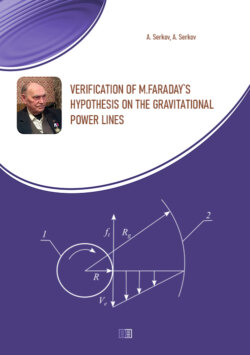Читать книгу Verification of M.Faraday's hypothesis on the gravitational power lines - А. Т. Серков - Страница 7
Chapter 1. The gravitational field of fixed and rotating bodies
4. The gravitational field of a rotating body
ОглавлениеThe interaction of a rotating body with elastic-viscous gravitational field, like other elastic-viscous fluids (liquids, gases) can be considered within the theory of dynamic boundary layers. However, with a persistent finding in the literature [4], it is almost not possible to find data on formation the boundary layers the rotating bodies.
The closest well-studied case can be considered a tear flow when the fluid flow separates from the surface of the curved shape. At the front of the body curved shape (Fig. 3) the flow velocity in the boundary layer decreases from the value v0 on the outer edge of the layer and to v = 0 on the body surface, At the point s there is separation of a laminar boundary layer, and turbulization of the flow.
Fig. 3. The scheme of formation of separated flow around the flow body with a curved generatrix: v0 is the flow velocity, s – point margin, δ – thickness of the boundary layer.
Given that according to the accepted concept to consider the gravitational field as a viscous-elastic medium, we can assume that during the rotation of a celestial body around it will produce dynamic laminar layer δ, the thickness of which will depend on the mass and speed of its rotation and to meet space scale (tens to hundreds of thousands of miles).
Figure 4 provides a diagram of the dynamic boundary layer (2) of the gravitational field on the surface of a rotating spherical celestial body (1). The body rotates at a linear velocity v0. Due to the viscosity of the environment (physical vacuum) formed in the boundary layer, the velocity gradient. On the body surface at point s, the velocity of the particles of the physical environment is equal to the linear velocity of the body vo. As the distance from the surface it drops to zero at the surface boundary layer.
Fig.4. The formation of a boundary layer δ around the rotating sphere: 1 – rotating sphere, 2 – laminar boundary layer, 3 – turbulent boundary layer, vo – linear speed on the surface of a sphere, s – point separation, fg is the gravitational force, fc is the centrifugal force,
At point s on the boundary layer, there are several forces that seek to tear it from the body surface. Most of this is centrifugal force fc due to rotation of the body. Another force that is oriented on the boundary layer separation is a normal component of the force is the viscous resistance of the physical environment fv. Has a certain value of the normal component of the inertial force fi, although in the modern sense of the properties of the physical vacuum is hard to speak about its mass (dark matter!). These forces are balanced by gravitational force fg, so that the formation of a boundary layer around the rotating spheres equality:
fg = fc + fv + fi, (3)
For a laminar boundary layer lies a turbulent layer δt (3). However, the turbulent layer, apparently, can occur directly on the surface of the body, if the three components of the breakout forces in equation (3) will be greater than the gravitational force.
Of great importance is the velocity gradient in the boundary layer. Thanks to the difference of the layer velocity will be concentric (tangential) orientation of the force lines that will lead to such changes in the properties of the gravitational field in which the orbital moving body will not cross the power lines and expend energy on their intersection. Due to the concentric orientation of the power lines appear energetically favorable orbit on which the appeal cosmic bodies will be without energy consumption.
